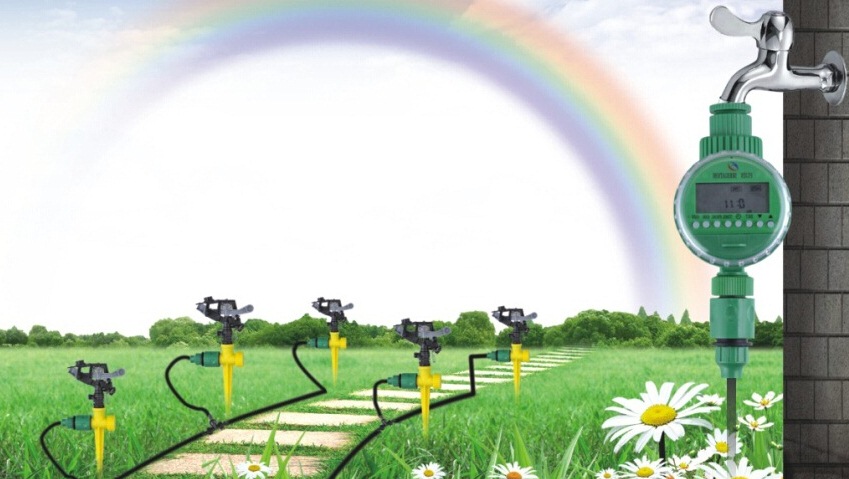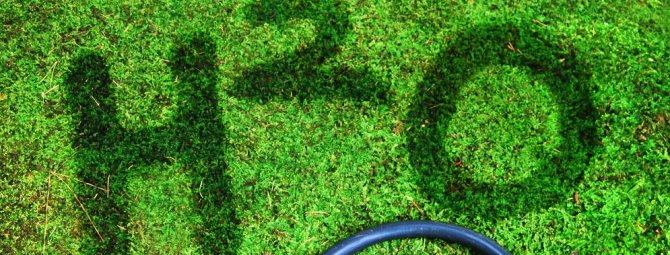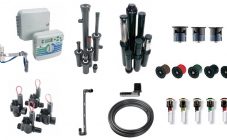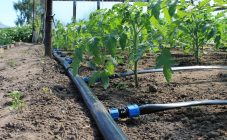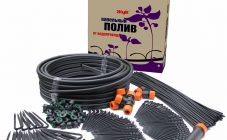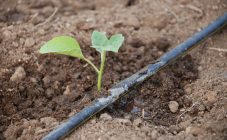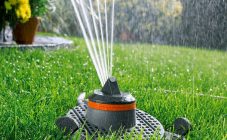Content:
Automatic watering is designed for fruitful plant growth without human intervention. The automatic water supply system helps to ensure the rate of soil moisture, works taking into account the current weather conditions. This is important for gardeners and gardeners, large greenhouses.
What is automatic watering
Automatic watering is an irrigation system created on the principle of automated pumping of water. It is designed for easy maintenance of green spaces.
According to the purpose, watering is divided into types:
- landscape - performs the task of watering yards, parks, squares;
- agricultural - irrigates fields, greenhouses;
- combined (polyvalent) - irrigates landscape and agricultural facilities, combines irrigation of yards, lawns, flower beds, vegetable gardens, tomatoes in greenhouses.
According to the principle of operation, autowatering in the country is divided into types, which are often combined in one system:
- sprinkler - supplies water in the form of rain, watering lawns;
- drip - supplies water to the root, used for ornamental plants in greenhouses and open ground (beds);
- root - water is supplied to the root, used for watering large trees and ripening fruits.
The advantages of an automatic sprinkler are:
- quality - irrigation with water of the required temperature at a given time of the day;
- savings - the amount of water does not exceed the norm;
- lack of attachment to the summer cottage - the system works without the participation of people, automatic watering of flowers is possible when a person is on vacation;
- aesthetics - all elements are underground.
Arrangement and planning
The creation of such a system is a complex step-by-step process, but quite feasible if you thoroughly understand it. Automatic irrigation design - an important stage, which is better to entrust to professionals. Installation can be done by yourself. Service is associated with the replacement of some elements according to the degree of their wear. Professional correction is required in spring for water supply, controller programming and irrigation sectors adjustment, in autumn - to preserve the system for the winter, remove water from it.
How to make automatic watering? Each of the automatic irrigation systems consists of specific parts:
- water reservoir - tank, pond, river, well;
- pumping station - pump for autowatering, filter, automatic start-up;
- control unit - controller, sensor, valves;
- supply lines - pipes, fittings;
- irrigation elements - nozzles, rotors, drip tapes.
How to make a site plan
Before designing and assembling the automatic irrigation system in the country, it is required to draw up a site plan. To do this, a diagram is drawn on paper with the location of sprinklers and highways. It is important to consider the location of all buildings, gardens and paths. It is optimal to make a scheme in a new area, then you will not have to spoil the lawn.
The plan is drawn on graph paper: first you need to mark the place of the water intake and the home pumping station. Ideally, if the water comes from the center of the site, then the lines will be the same length to maintain uniform pressure within the system. This will result in uniform, automatic watering of the area.A branch line is drawn from the place of the water source, sprinklers (sprinklers) are marked.
The number of the latter depends on the radius of action, respectively, the drawing of the area of operation of each of the sprinklers. All groups of garden sprinklers are fitted with solenoid valves.
The marking of the site is desirable in accordance with the scheme. To do this, you can take a colored polypropylene cord and pegs or electrodes. The cord is pulled without sagging, digging 25 cm deep from it. If difficulties arise on the way in the form of stones, roots or holes, they are eliminated. If this is not possible, it is best to get around the obstacles.
Hydraulic calculation
To determine the working water pressure at the ends of the irrigation lines, a hydraulic calculation will be required. It also allows you to calculate the pipe diameter of the future system. For the calculation, special engineering tables are used. It is optimal to choose a diameter of 40 cm for the central automatic irrigation pipe for a greenhouse on areas up to 1 hectare. It is easy to choose inch solenoid valves and inexpensive fittings for it.
After the calculation, it is necessary to combine the irrigation points with a given radius, flow rate and irrigation sectors into groups of 50 liters per minute. If you divide the flow into two smaller ones, then the additional pipes should include a passage of 25 liters of water in 1 min. For other parameters, calculations are made by analogy. For branching pipes, diameters smaller than the main one are always used. The section of the pipe depends on the placement area: at the base it is larger, for sprinklers it is smaller.
Also, when calculating, you need to monitor the losses of the working head for each section of the pipeline to the irrigation heads. A pressure slightly above the norm is not terrible, most of the elements have a reserve of 2-3 atm. Static heads wate their sector with continuous rain, which requires a large flow of water per unit of time. Rotary pumps irrigate with one stream, moving it over the area, so the flow rate does not change, but the irrigation time increases.
To maintain the operating pressure limit of 2.5-3 atm., According to the instructions, it is necessary to limit the radius of action to 5 m. This is observed by installing a well, an accelerating pump or a transition tank. Because of this, a separate valve is installed for every 4-5 heads, which increases the total cost of the system. This can be avoided by combining rotary and static heads of the same type at a distance of their radius of operation. They need to be connected to different valves.
Installation of an automatic irrigation system
It is not difficult to independently mount the IPAAR irrigation system if you follow the stages of work:
- Digging trenches.
- Laying pipes on a leveled bottom (the optimum air temperature during operation should be 10-15 ° C). When laying low-pressure polyethylene products, they need to be warmed up.
- Cuts of pipes according to the layout of the mains, connection of fragments with fittings. Mounting sprinklers taking into account the radius of the spray, connecting lines to valves and hydrants.
- Outlet of the reverse side of the line to the pump with a tank.
To get water into the system, use polyethylene containers with a volume of 1-6 m³ (2 is enough for 20 acres). They are supplied with water from a well or at home, pumped into the main line with a pump.The valve can be used to add water during irrigation. One cycle of watering a zone consumes 150-250 liters of water. With regular irrigation, this amount will be enough even in the heat. Experts advise to water the plants in the morning at 5-6 o'clock and in the evening after 21.00. The operating time of each valve should be about 10-15 minutes, for this a timer is programmed.
The source of water is often a well, which can clog the system with sand and dry plant residues. They can damage sprinklers and even clog pipes. To prevent this from happening, filters are installed. Pressure regulators are needed when using sprinklers (rotary-rotating or static) with different pressures or automatic drip irrigation. Automation controllers are responsible for the opening and closing times of valves, electromechanical valves for water supply to the sprinklers.
Features of operation
In order for the autowatering system to work correctly, it must be properly operated:
- A container with water can be used at an air temperature of 10-40 ° C. The pressure cannot exceed 6 atm., And the water temperature is 32 ° C.
- The auto watering machine works in manual or automatic modes. The first option is carried out by turning on valves or opening taps. Automatic watering is carried out according to the set program. You can use 4-6 waterings per day, duration 1-60 minutes.
- Before starting operation, it is worth replacing all batteries in the automatic irrigation equipment.
- Every 2 weeks it is necessary to check the cleanliness of the water pre-filters before entering the pump and supply lines.
- At the end of the summer season, it is recommended to remove the solenoid valves from the wells, remove the precipitation and soil moisture sensors.
- Remove all batteries for winter storage.
- During operation, it is worth making sure that the lawn is at least 3 cm, otherwise the sprinklers may be damaged.
- If the heads become dirty, clean them with a soft brush.
- Do not allow soil to get into precipitation sensors, inside wells.
- The lenses of the sensors should be rinsed with water and wiped with a soft cloth. The same is done with the internal plastic cavities for reliable actuation.
Assembling the automatic irrigation system
The installation of the autowatering system is described above, but there are certain assembly rules that must be taken into account for the proper operation of the equipment. So, it is better to dig a trench with a depth of at least 1 m, then the pipes will not freeze in winter. If this is difficult to accomplish, you can dig ditches 30 cm deep, but with a slope and installation of drain valves at the lowest points. This is done to drain water from pipes before winter storage.
The connection of pipes, valves and other elements is done on the surface, then the finished assembly is placed in a pit. Make sure that the system is tight, screw on valves and sprinklers, fill the holes with soil. After adjusting the irrigation direction, water is supplied to operate the automatic irrigation system.
Thus, the automatic irrigation system helps to provide plants with the required moisture rate in the given climatic conditions. You can assemble it yourself or ask for help from specialized companies. In the first case, you will have to tinker, but it's worth it, since you no longer have to rush to the country house after work to water the garden.

